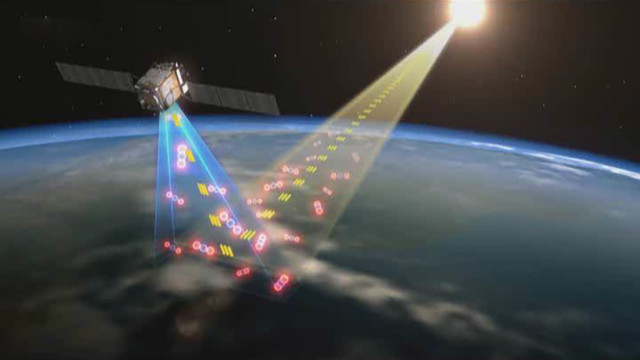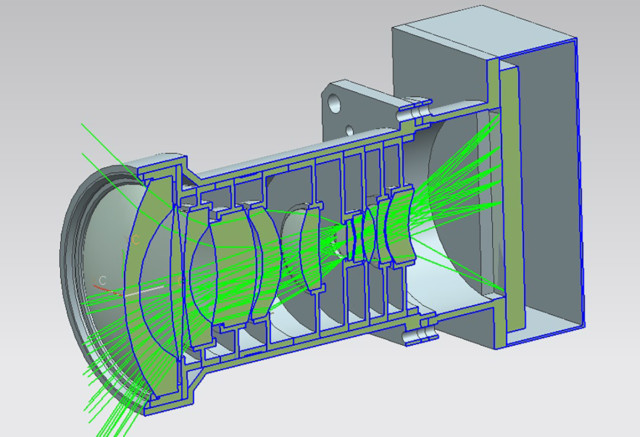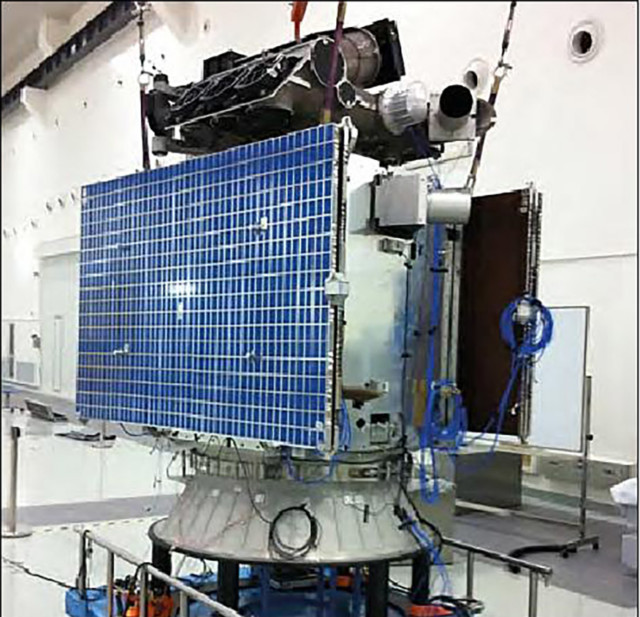To further understanding about carbon emissions and their effect on climate change, China has launched its first carbon monitoring satellite, TanSat, from Jiuquan Satellite Launch Centre in the Gobi Desert. The satellite was launched atop a two-stage Long March 2D carrier rocket around 19:15 UTC on December 21.
The 1,400 lb satellite will settle into a sun synchronous orbit 435 miles above the Earth’s surface where it is expected to monitor global carbon emissions for at least three years.
‘TAN’ is the Chinese word for carbon.
To accomplish its mission, TanSat is equipped with two key pieces of technology:
High-resolution Carbon Dioxide Spectrometer (CarbonSpec) to measure the near-infrared absorption by CO2.
Cloud / Aerosol Polarimetry Imager (CAPI) that will compensate for any CO2 measurement errors by high-resolution measurements of cloud and aerosol in the atmosphere.
Because of the two complementary components, TanSat should be able to make accurate measurements over land, oceans, and the full range of lighting conditions.
Depending on the earth areas being examined, TanSat operates in different modes for capturing images and data. Above land observations will be primarily made in nadir mode, but sun-glint observations are conducted over oceans where brightness and reflectivity are an issue. Target mode will employ multiple lens angles simultaneously.
Developed under the Chinese Ministry of Science and Technology, the operational goal of TanSat is to retrieve the atmosphere CO2 with precisions of .5% (2 ppm) on national and global scales. The scientific goal of the project is to improve understanding on the global CO2 distribution and its contribution to the climate change. This also includes CO2 variations between seasons.
The satellite will also verify its data with ground surface CO2 validation stations, including those at Shandong, Hainan, DunHuang, and XiShuang Banna.
In a mission statement from team leaders Daren Lu and Liu Yi, Tansat “aims to provide a scientific basis for scientific and economic policy decisions, and to formulate new development plans to meet the demands of climate change and the carbon budget. Satellite measurements of GHG emissions are a key component of this program.”
Carbon dioxide levels in the atmosphere have increased over 30 percent since the beginning of the industrial revolution in the mid 18th century.
Though, historically the United States is the greatest emitter of GHGs, rapid industrial development in China over the last 15 years has caused the country to surpass the U.S. and become the world’s current largest source of man-made carbon emissions.

The China Central Television (CCTV) ‘Big Pants’ building in Beijing shrouded in smog on Monday, December 12, 2016. (PHOTO: CNS)
China has partnered with the University of Leicester and University of Edinburgh in the United Kingdom. Further talks are taking place with NASA and other international agencies about data and technology sharing aimed at addressing climate change.
http://spacenews.com/earth-science-discussion-latest-sign-of-nasa-china-ties/
There had also been discussion of TanSat aligning with the international “A-Train” of satellites managed by NASA – a chain of observation satellites, each with different instruments, that orbit within close succession of one another to optimize data collected from each satellite’s mission. However, requirements for joining the A-Train were incompatible with the TanSat mission and it was decided to have the satellite operate on its own orbit.
In 2014, NASA also launched its own carbon monitoring satellite, the Orbiting Carbon Observatory 2 (OCO-2).
Under the Paris climate deal reached with the international community last year, China pledged to peak its CO2 emissions by 2030 or earlier. At the same time, they hope to refit industry and technology to reduce CO2 emissions per unit of GDP by 60-65 percent of the 2005 levels.
If the TanSat launch is successful, it will be the 20th successful launch of 2016 for Chinese space endeavors. This year has exhibited a rapid pace of activity and development for the program, including the world’s first quantum communications satellite, the massive Long March-5 rocket, a new prototype space station Tiangong-2, and a record breaking stay for Chinese Shenzhou-11 astronauts in space.
 CGTN America
CGTN America
 Earth
Earth








